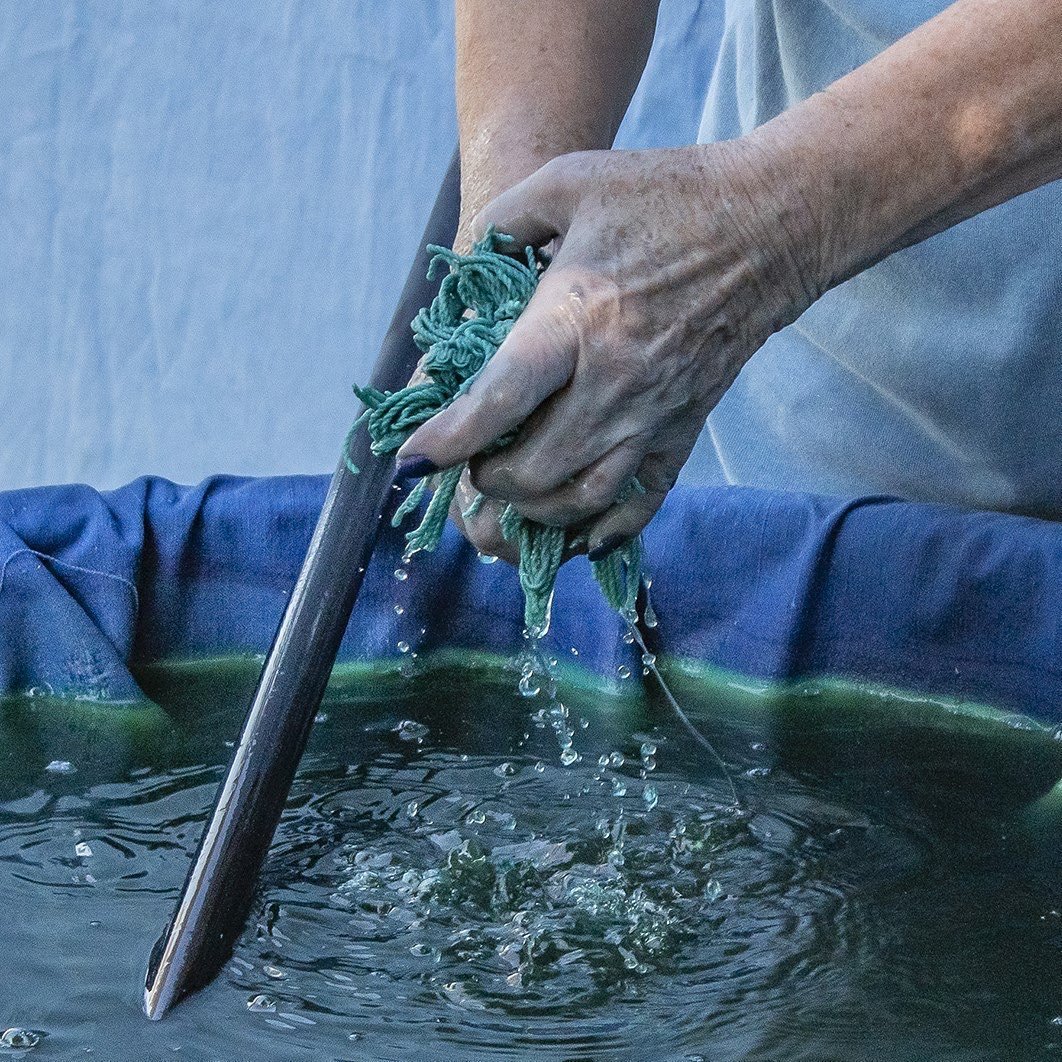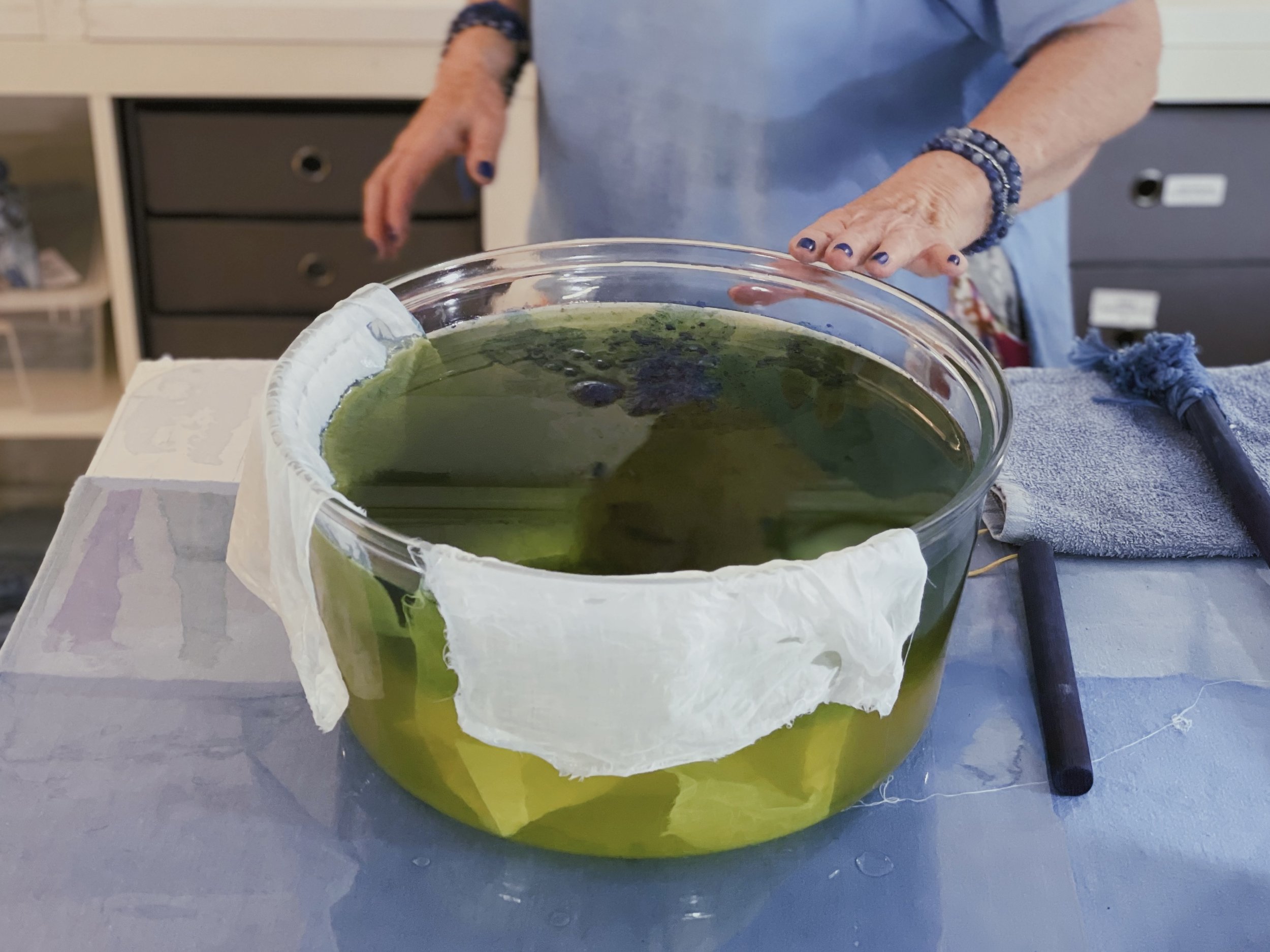Qué hacer en Toulouse: Taller de tinte "Bleu de Pastel" en AHPY
Al pensar en qué hacer en Toulouse, nos viene a la mente nuestra querida "Ville Rose" con su icónica arquitectura de terracota. Pero bajo las tonalidades rosas se esconde un matiz más profundo: el hipnotizante "Bleu de Pastel". Y si se pregunta por qué es famosa Toulouse además de por sus tonos rosados, este antiguo pigmento azul se gana por derecho propio su puesto en la lista.
Esta mañana, el equipo de Toulouse Gourmet Tours se embarcó en un viaje de color y tradición. A un tiro de piedra de la Place du Capitole, en el número 13 de la Rue des Lois, nos hemos adentrado en el encantador reino de AHPY. Bajo la boutique, descubrimos un mundo subterráneo donde la magia del pastel cobra vida, todo ello comisariado por la talentosa Annette Hardouin, galardonada con el título de Maître Artisan en métier d'art desde 2010.
Pero antes de sumergirnos en nuestra experiencia, despleguemos el vibrante tapiz de lo que es realmente el bleu de pastel.
Un poco de historia del pastel
La planta del pastel(Isatis tinctoria), o "guède" como se la conoce tradicionalmente, es más que una fuente de color: es un símbolo de prosperidad y legado. Sus hojas trituradas producen un pigmento que dio origen al icónico "bleu de pastel", y sus semillas son un tesoro para obtener aceite de pastel prístino.
Los centros de Toulouse, Carcasona y Albi, enclavados en la región de Pays de Cocagne, se convirtieron en el epicentro del cultivo del pastel. Durante el Renacimiento, el azul pastel no era sólo un tinte; era "oro azul". Este lucrativo comercio aportó una inmensa riqueza a la región. Como prueba, no hay más que ver las majestuosas mansiones de Toulouse, o "hôtels particuliers". El Hôtel d'Assézat, a menudo aclamado como la joya arquitectónica de la corona tolosana, es un testimonio de la opulencia y el éxito de los comerciantes de pasteles de la época.
Sin embargo, como nos enseña la historia, nada permanece constante. Con la llegada del añil en el siglo XV, el pastel quedó gradualmente relegado a un segundo plano. Sin embargo, tras siglos en la sombra, el pastel ha renacido en el siglo XXI, con su arte de teñir reconocido ahora como parte del patrimonio cultural inmaterial de Francia.
De la sombra a la luz: AHPY
El renacimiento del pastel se debe a Denise y Henri Lambert, que redescubrieron su encanto en el siglo XX. Pero el vibrante pulso del pastel late con fuerza gracias a defensores como Yves y Annette, el corazón y el alma detrás de AHPY. Desde hace más de 20 años, este dúo no sólo recrea el pastel, sino que lo vive, transformándolo de mero pigmento en arte y estilo de vida.
En nuestro taller de hoy, Annette nos ha guiado a través del fascinante proceso de teñido. Aunque el pastel no es soluble en agua por naturaleza, con un toque de glucosa y amoníaco (históricamente se utilizaba orina masculina), se transforma maravillosamente. El baño de tinte puede parecer verdoso al principio, pero cuando el tejido entra en contacto con el aire, surge un azul pastel brillante a través de la oxidación.
Los talleres de AHPY son un sueño hecho realidad para quienes desean profundizar en la historia y las técnicas del pastel, e incluso probar a teñir. Ofrecen tanto breves introducciones como sesiones prolongadas para teñir tus propios tesoros.
Al final de nuestra experiencia AHPY, nos fuimos no sólo con telas vibrantes, sino con un profundo aprecio por el colorido pasado de Toulouse. Así que, a la hora de decidir qué visitar en Toulouse, déjese guiar por el "bleu de pastel". Sumérjase en el cautivador mundo del pastel de AHPY y deje que el preciado azul de Toulouse hechice sus sentidos.












